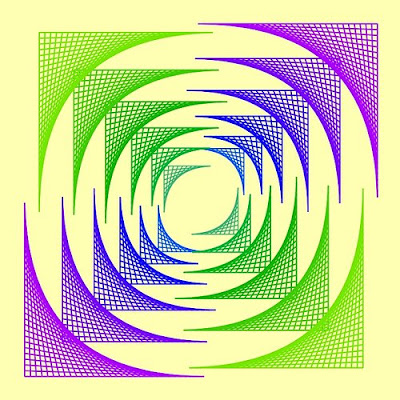
There are images we can create in Mathematics called Fractals. They are objects that can be split into parts that are smaller copies of themselves. It is like looking in the mirror at the fun house and seeing your image get smaller and smaller. Today we are going to make a puzzle that will result in a Fractal if put together properly. Click on the link to the right that is called: Puzzle.
Try to rearrange the pieces the complete the image. Post a comment to me of no less than five sentences that describe your Fractal.










